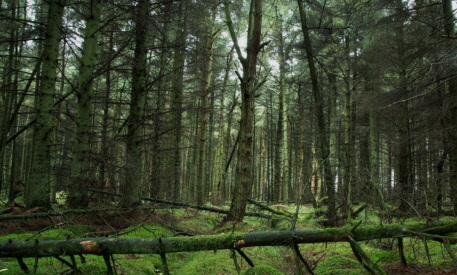Sustainability

To operate the Natchitoches plant sustainably we must ensure that the rate at which wood fibre is removed from the forest is less that the rate at which the trees are growing. If the forest grows at rate of 3.87 tonnes/acre and all consumers take less than 2.9 tonnes/acre there is an annual increase in the quantity of carbon being sequestered by the forest. Currently the drain rate is projected to be less than 2.60 tonnes/ acre when Natchitoches is operating at full Phase 3 capacity.
The forest growth rate in the Natchitoches should be about 5 tonnes/acre. This rate has been in decline for a number of years due to a reduction of a maintenance practice known as Silviculture. Silviculture defines how the forest is planted, and maintained. Silviculture is applied at the stand level and Forestry practice is applied to the forest as a whole and as such both practices impinge on each other.
Silviculture involves; planting, weed treatment, culling, removal of diseased and dead-stock and regular thinning usually scheduled for year 7 and 14 of the growth cycle. Silviculture is expensive. To encourage landowners carry out Silviculture practice there needs top be a way to offset the cost. Without this financial offset Silviculture is only sporadically applied. An unmaintained stand is thickly populated with poor quality of trees, where there is little light penetration to the forest floor. The trees in such a stand do not develop properly are usually stunted and the diversity of flora and fauna are adversely impacted.


A well maintained stand of 14 year old trees will have space between the trees to enable them to grow to their full potential, light will penetrate to the forest floor and there will be a diversity of habitats that will encourage a diversity of flora and fauna. These trees will be healthy and growing at the average of 5 tonne/acre. After 27th year the growth rate declines and the value of the tree declines.
The TBB plant is designed to process the waste generated by Silviculture practice. Plant operations will provide a revenue stream for the land owners that will enable them to fund proper Silviculture practice. In this way the presence of the TBB plant at Natchitoches is vital to the improvement, health and sustainability of the Natchitoches fibre basket. The current projected shortfall of the ideal cull volume is running at 5 million tonnes.
If the fibre demand of the Natchitoches plant exceeds the forest growth rate, the fuel will be disqualified as a sustainable alternative to fossil fuel. Consequently sustainability of fibre supply and responsible forest management are core values the company will continue to emphasize for the life of the plant.